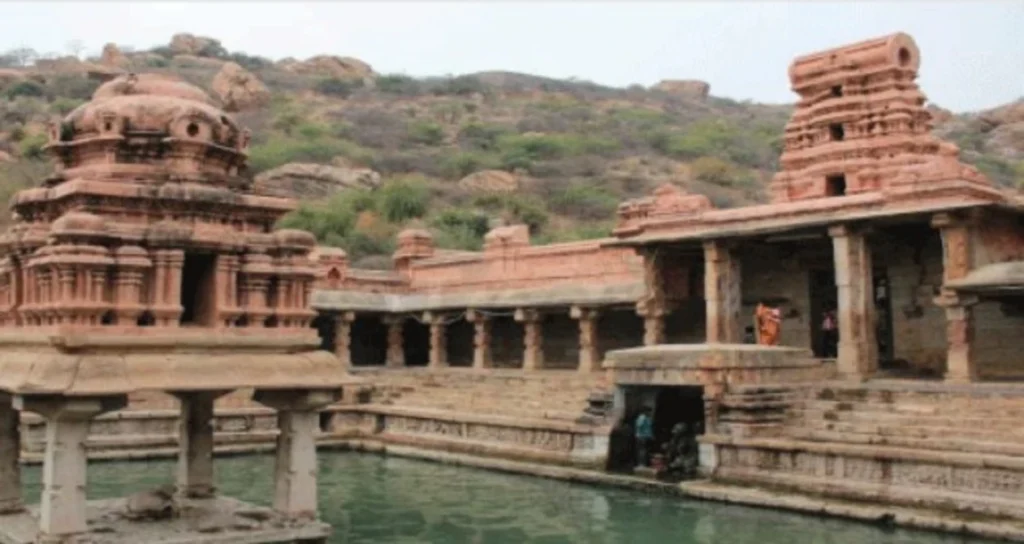Discover Nagarkurnool, Telangana’s hidden gem, known for its historic sites, beautiful waterfalls, rich culture, and scenic landscapes. A perfect blend of nature and history!

Explore Nagarkurnool: Telangana’s Natural & Cultural Hub
Nagarkurnool District, located in the southern Indian state of Telangana, is a region steeped in history and culture. Spanning over an area of approximately 2,675 square kilometers, this district is characterized by its diverse landscapes, ancient landmarks, and a unique blend of tradition and modernity.
Historical Significance:
The history of Nagarkurnool District can be traced back to ancient times, with evidence of human habitation dating back to the Paleolithic era. The district’s name itself is believed to have been derived from “Nagarkurna,” meaning “Cobra’s Den,” owing to its association with local legends and mythology. The region has seen the rise and fall of various dynasties, leaving behind a rich tapestry of architectural marvels and cultural heritage. Remnants of forts, temples, and other historical structures stand as testament to the district’s storied past.
Cultural Diversity:
The district is home to a vibrant mix of cultures, languages, and traditions. Its population comprises people from various communities, each contributing to the rich cultural mosaic. Festivals like Bonalu, Bathukamma, and Dasara are celebrated with fervor, showcasing the religious and cultural harmony that exists among the residents. The traditional art forms, music, and dance of the region reflect the spirit of its people and their deep-rooted connection to their heritage.
Geographical Splendor:
Nagarkurnool District’s landscape is a harmonious blend of plains, hills, and rivers. The district is traversed by the Krishna and Tungabhadra rivers, which not only contribute to the agricultural productivity of the region but also add to its scenic beauty. The Nallamala Hills provide a stunning backdrop to the district, offering opportunities for trekking and adventure. The rich biodiversity of the district includes a variety of flora and fauna, making it an ecologically significant area.
Agriculture and Economy:
Agriculture forms the backbone of the district’s economy, with crops like cotton, paddy, and groundnut being cultivated in abundance. The fertile plains and the presence of the Krishna River contribute to the agricultural prosperity of the region. In recent years, there has been a push towards diversifying the economy, with efforts to promote industries and tourism. The district’s proximity to Hyderabad, the capital of Telangana, has also led to its growth as a potential industrial and commercial hub.
Challenges and Opportunities:
While Nagarkurnool District boasts a rich heritage and immense potential, it also faces its share of challenges. Ensuring sustainable agricultural practices, improving infrastructure, and enhancing healthcare and education facilities are areas that demand attention. The district’s tourism potential, particularly its historical sites and natural beauty, can be harnessed to boost economic growth and employment opportunities.
Famous Places in Nagarkurnool District
Nagarkurnool District in Telangana, India, boasts a plethora of famous places that showcase its rich history, culture, and natural beauty. From ancient temples to scenic landscapes, here are some of the district’s notable attractions:
Uma Maheshwaram Temple: This ancient temple dedicated to Lord Shiva is a prominent pilgrimage site. It is known for its stunning architecture and spiritual significance, attracting devotees and tourists alike.
Jetprole: Jetprole is renowned for its serene reservoir and picturesque surroundings. The clear blue waters of the reservoir, nestled amidst lush greenery, offer a perfect setting for relaxation and picnics.
Alampur: A historical treasure trove, Alampur is famous for its intricate temple architecture. The Nava Brahmas, a group of nine temples, are a prime example of Chalukyan architecture and are recognized as UNESCO World Heritage sites.
Kollapur: This town is famed for its Kollapur Palace, an elegant structure that once served as the seat of the ruling Kollapur dynasty. The palace’s architecture and the scenic beauty of the area make it a popular tourist destination.
Somasila Dam: The Somasila Dam is a significant reservoir built across the Pennar River. The dam’s serene surroundings and boating opportunities make it a popular spot for nature enthusiasts.
Mallela Theertham Waterfalls: Nestled in the Nallamala Hills, these waterfalls are a sight to behold. Surrounded by dense forest and rocky terrain, the falls provide a refreshing escape from the hustle and bustle of city life.
Nagasamudram Lake: Also known as Nagasamudram Cheruvu, this lake is known for its tranquil beauty and is a haven for birdwatchers. The lake’s serene ambiance and the variety of avian species make it a delightful spot for nature lovers.
Gadwal Fort: A historical marvel, Gadwal Fort showcases impressive architecture and intricate designs. The fort’s stone carvings and spacious halls offer a glimpse into its glorious past.
Wanaparthy Palace: This majestic palace is an architectural gem that stands as a testimony to the opulence of the Wanaparthy dynasty. The palace’s blend of European and Indian architectural styles is truly captivating.
Pangaluru: For those seeking a spiritual experience, Pangaluru’s Jainath temple is a must-visit. Dedicated to Lord Mahavir, the temple’s serene atmosphere and intricate carvings make it a revered site for devotees.
From historical sites to natural wonders, Nagarkurnool District presents a diverse range of attractions that cater to various interests. Whether you’re a history enthusiast, a nature lover, or a seeker of spirituality, this district offers a unique blend of experiences that leave a lasting impression.
Read More :-